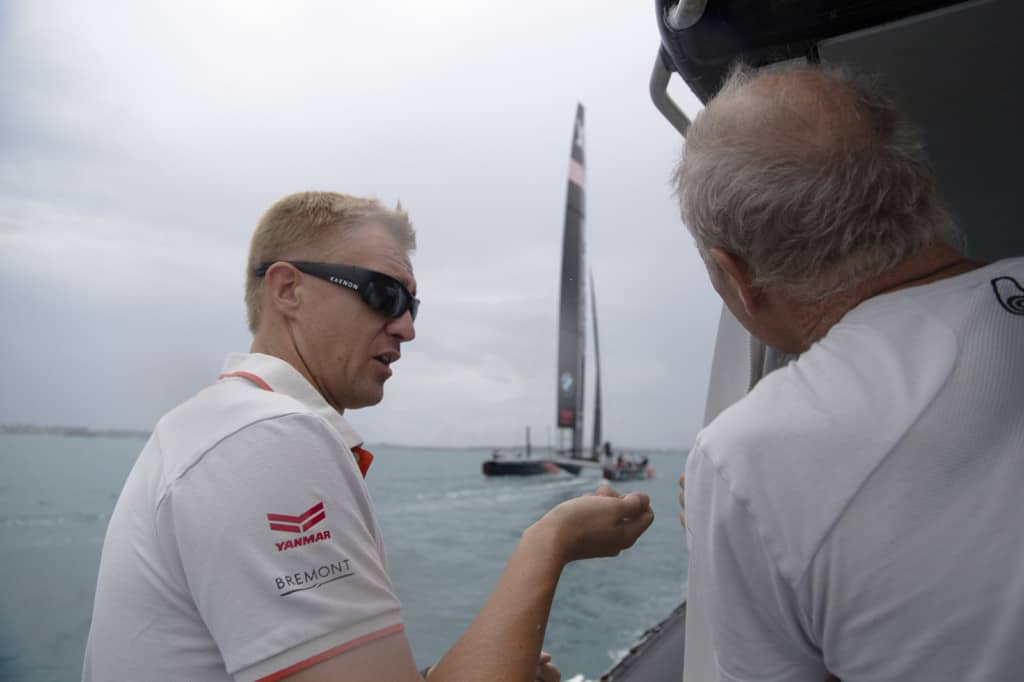BRYAN BAKER
Aurora Flight Sciences

Aerodynamicist, Advanced Vehicle Research Division for Aurora Flight Sciences (a Boeing Company)
Consultant, Fluid Dynamicist, Baker Performance Yacht Designs
UM NAME BSE ’03
FIRST JOB OUT OF UNDERGRAD:
I was fortunate enough to work for a legendary yacht designer, Bruce Farr, right out of school on the pinnacle yachting race in the sport, the 32nd America’s Cup.
MOST CHALLENGING PART OF YOUR JOB:
The hardest part of my job is finding a clear direction with regards to design and making certain that all the fundamentals are adequately met. Often we are starting from a blank sheet of paper and need to produce a real product in a very short time. Making the right choices right off the bat can seem daunting. In the end, the race is your report card win or lose. You need to get down the basics to be remotely competitive. A racing edge (advantage) is only developed after you build a sound fundamental foundation.
WHY ARE YOU PASSIONATE ABOUT YOUR WORK?
I love the science of it. Sailing and aircraft only work by using nature in an efficient way. We take advantage of the physics around us optimizing forms in a computer that in a crazy short cycle become a reality (year time frame). I love racing because the vehicle is tested in the harshest ways and you know where you stand quite quickly and with a definite conclusion.
WHAT WOULD YOU SAY HAVE BEEN THE GREATEST ADVANCES OF THE LAST DECADE IN NAVAL ARCHITECTURE AND MARINE ENGINEERING?
With the aim at sailing, I’d say “Foiling”. Foiling has revolutionized the sport of sailing. It is the culmination of lighter, stronger materials, clever control systems, and an aggressive use of fluid dynamics to reduce drag and balance the vehicle. At both low speed and high speed on the foils, we are lowering the pressure to the point of cavitation (turning water to vapor). The smaller the foils means less in the water and the faster you go. I see this development continuing with advanced controls to provide stability to a system that is inherently not for a sailor alone.
WHAT IS YOUR VISION OF THE FUTURE OF NAVAL ARCHITECTURE AND MARINE ENGINEERING?
I believe that the world is redefining how designers think. We are developing sensors and controls that are working reliably at rates far quicker than what we could perceive. Communication between these sensors is getting quicker. Processing is becoming smarter through Artificial Intelligence (AI). This gives us the ability to explore vehicle designs which are more and more aggressive. I think this development has given autonomy and advanced control systems the forefront in today’s modern vehicles. I believe this trend will continue and influence everything from sailboats, cars, planes, and ships. You still have to get the fundamentals down as this new field isn’t by any means the answer to why things float, but it could enable us to take advantage of more efficient design solutions.
ADVICE FOR STUDENTS:
While you attend Michigan try and absorb everything. There are so many different avenues to explore, people to meet, and challenges to address. Get involved with teams doing things that are pushing the limits. Find your strength and force yourself to explore your weaknesses.